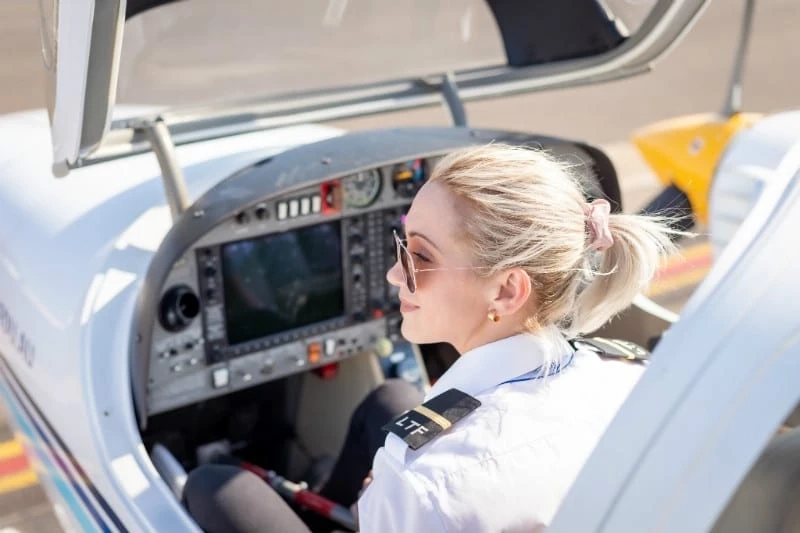As a flight instructor, the responsibility of shaping competent and confident pilots rests heavily on your shoulders. Among the many tools at your disposal, debriefing stands out as a crucial element in the training process. An effective debrief not only reinforces learning but also builds the foundation for continuous improvement and safety.
Why are we debriefing?
More than just a post-flight ritual, debriefing is an integral part of the learning process in aviation. After each flying session, a structured and thorough debrief allows the student to understand their performance, identify areas of improvement, and consolidate knowledge. In this regard, reflective practice is very important for the reinforcement of good habits and the correction of any mistakes observed during the flight.
Preparation for Debriefing
Effective debriefing starts with effective preparation. As a flight instructor, one should take copious notes during the flight regarding major events, manoeuvres, and overall student performance. These notes will form the basis of your debrief. Also, review any available flight data or video to use as evidence to support your feedback in the debrief.
The debriefing should be held in a constructive and supportive environment. First, set a constructive tone by prefacing that it is learning and improvement, not criticism. Start by mentioning the student's accomplishments and strengths before going into areas of needed growth. This will help build confidence and open communication.
Structure of the Debrief
A well-structured debrief follows a logical flow, covering the flight chronologically or by key events.
Here's a suggested structure:
- Opening Remarks
Start with a brief summary of the flight, what the goals of the flight were, and what was to be accomplished.
- Student Self-Assessment
Encourage the student to describe how the flight went from his perspective. The self-evaluation will allow him or her to reflect on performance and consider, independently, their own strengths and weaknesses.
- Instructor Feedback
Please provide your detailed feedback, supported by specific examples from the flight. Use the notes and data you have collected to emphasise the positives and areas for improvement.
- Discussion and Analysis
Engage the student in a dialogue about the mistakes made, the reasons for them, and alternative approaches. By this means, the student comes to understand the principles involved and learns to make decisions.
- Action Plan
Finish with a clear action plan, stating what the student should do in order to improve on their weaknesses and grow from their strengths. Outline the objectives that the student should work on for the next flying lesson.
Techniques for Effective Feedback
Giving good feedback—that would actually help—is something that requires practice and finesse.
Here are some key techniques:
- Be Specific: The feedback should not include general statements but rather address the events and behaviours observed during the flight. For example, instead of "Your landing was rough," state, "During the landing, you flared too early and caused a hard touchdown."
- Use data and visuals: Where possible, include actual flight data, charts, or even videos to back your feedback. The visual aid will help the student understand his or her performance better and make the feedback more meaningful.
- Balance positive and negative feedback: While it's important to address mistakes, highlight what the student did well. This balanced approach helps maintain motivation and encourages continuous improvement.
- Focus on solutions: Instead of merely pointing out mistakes, give practical solutions or alternatives. For example, mention other techniques or manoeuvres that the student could work on to improve performance.
Solving Common Problems
Debriefing can be difficult at times, especially when the subject matter is sensitive or difficult.
Students may feel that a mistake pointed out is an insult or they may feel frustrated. Make it gentler on the ears by framing your feedback constructively and tying it to learning objectives: for example, "Well, let's use this as an opportunity to improve on your technique."
Overconfident students may overlook their mistakes. Encourage them to critically assess their performance and provide evidence-based feedback to highlight areas for improvement.
Sometimes debriefing can take much time, especially when there are many points to discuss. Just bring up the most important things and concentrate on only a few key points to ensure the session is productive and within reasonable time.
Continual Improvement and Adaptation
Debriefing is not a one-size-fits-all process; each student is unique, and their learning style and needs can also be just as unique. Continue to adapt your techniques in debriefing based on progress and feedback from the students. Be open to any comments and suggestions from colleagues and mentors, and welcome all new ideas and approaches.
The Continuing Learning Journey
Debriefing is an ongoing, developing process with each flight and each student. As a flight instructor, your job is to coach and guide the students through the process of debriefing, thus enabling them to achieve their fullest potential. In mastering the art of debriefing, you play a huge role in ensuring their success and safety as future pilots. In short, effective debriefing forms the backbone of flight instruction. Prepare well, create a good learning atmosphere, give specific and balanced feedback, and—most importantly—exploit the benefits technology can bring to enhance the learning experience of your students. You build a culture of continuous improvement and excellence in your pilot course by incorporating these techniques in your debriefing sessions. It is of utmost importance, in relation to obtaining and maintaining your flight instructor rating, to achieve a high-quality level in debriefing. It forms an important part of building competent and confident pilots.


